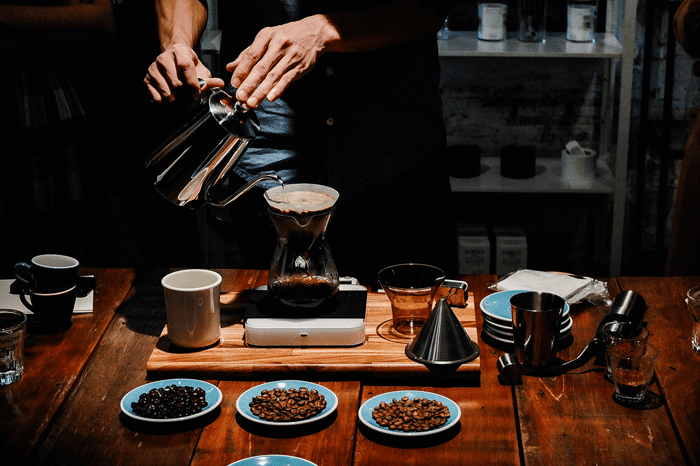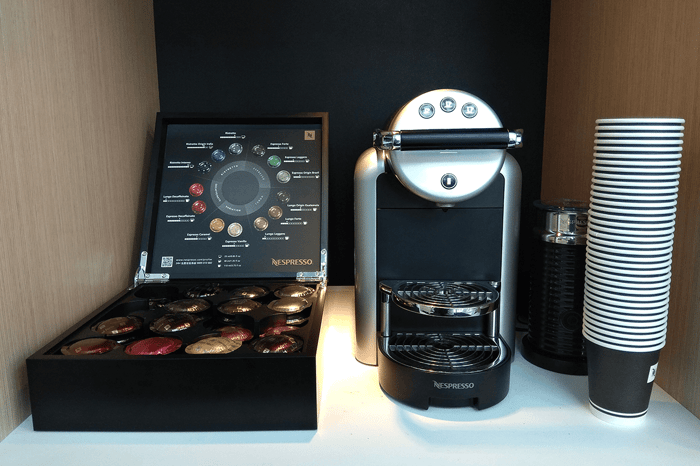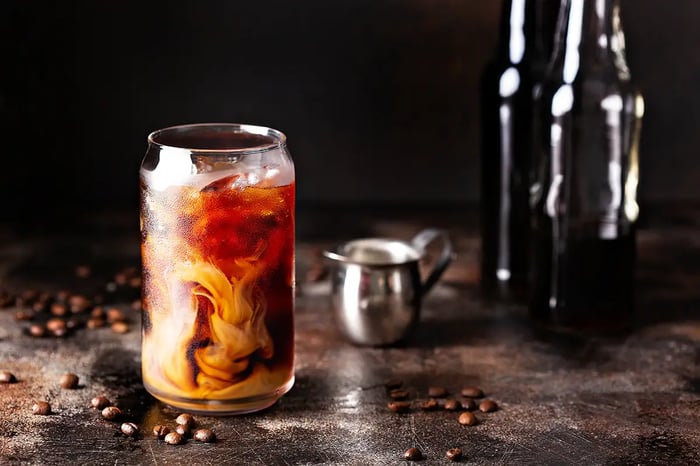
First of all, what are we talking about when we speak of “blooming coffee?”
(And no, it’s not Australian coffee. Let’s put a stop to that rumor right now. Why would you even suggest that?)
It’s a chemical process, and a step in some of the more advanced home brewing processes—for example, pour-over brewing, French Press, AeroPress, and so on.
You’ve probably encountered it putting more time between you and your cup of coffee.
But what is it doing, really?
You Call That a Bloom? This is a Bloom.
Blooming coffee—or “the bloom” as it’s referred to by really cool people—is the stage of brewing process where water comes into initial contact with the coffee, allowing the gasses inside the grounds to be released.
You can then watch with amazement (or not) as your grounds gently grow and rise.
This happens because when the carbon dioxide inside the coffee is released, the water takes its place, beginning the extraction process.
My Chemical Brew-mance
In at-home brewing directions, this chemical reaction is usually left to occur for about 30 seconds before moving onto the next step.
(Or if you’re me and it’s the first cup of the day, blooming is usually done for about 11 seconds. I’d say don’t be like me, but you have many reasons not to be like me besides impatient coffee blooming.)
Like many steps in more advanced coffee brewing methods, blooming can be overdone. (Onions: take note.)
If you find yourself with a yucky, bitter, or less-than-stellar tasting cup one morning, when nothing has changed in your brewing process, the coffee may have accidentally been left to bloom for too long.
Here’s the thing, though: the bloom definitely has an effect on the taste profile of the coffee that ends up in your cup.
How noticeable that effect is will vary from person to person, but it makes a difference. Scientifically.
However, you might recall that in matters of taste, sometimes concepts like “personal preference” come into the equation.
And not everyone prefers the taste of bloomed coffee to un-bloomed coffee.
So yes, your instructions might be telling you to de-gas your grounds—with the best intentions, of course—meanwhile, you might find yourself preferring coffee that hasn’t been given a chance to de-gas.
The aggressively-anecdotal evidence I’ve compiled from real life conversations, as well as more scientific sources like Reddit threads, supports that most people (who know what blooming is) do prefer bloomed coffee.
But it’s closer to say, a 70/30 or a 60/40 split rather than what those gatekeeping coffee snobs at that one really pretentious coffee shop downtown would have you believe.
When Coffee Fails to Bloom
What about when you’re trying to bloom coffee and nothing seems to happen?
Well, you’re probably dealing with either coffee that isn’t fresh, or coffee that hasn’t been stored properly, allowing the gases to release prematurely. No one likes that.
Also worth noting is that dark roasts will naturally tend to have more pronounced blooms than lighter roasts, because of the extra CO2 from the lengthier roasting process.
Conclusion
Yes, blooming has a very real impact on the flavor and aroma of your coffee. And many, if not most people, seem to prefer bloomed coffee to un-bloomed coffee.
Nonetheless, since it’s ultimately a matter of personal taste, I really can’t say blooming your coffee is 100% necessary.
But unless you know that you (or your guests) don’t like the way blooming affects the taste of your coffee, it makes sense to do it since a lot of people find that it makes good coffee taste even better.





